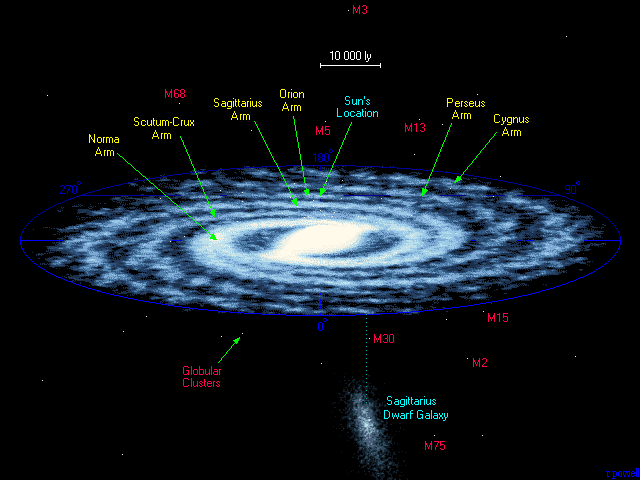
People who still do not know the tricks in measuring the distances between planets, stars, and galaxies can be trivial for them. The distances between the planets, and especially the stars and galaxies, are so vast the measurements we use here on Earth, kilometers and miles, are too cumbersome. Astronomers have developed other units to measure distances in the solar system and the universe.
Astronomical Unit
1 Astronomical Unit = 149 598 000 kilometers |
To overcome this problem, astronomers developed a distance measurement that was a longer yardstick. It is based simply on the distance from the sun to the Earth—about 93 million miles. It is called the Astronomical Unit, and abbreviated AU. The distance from the sun to the Earth is one AU. All distances in the solar system, even out to the Oort cloud, are stated in AUs. Here is a table listing the planets’ distances from the sun in AUs.
Mercury: 0.387
Venus: 0.723
Earth: 1
Mars: 1.524
Jupiter: 5.203
Saturn: 9.539
Uranus :19.19
Neptune: 30.06
Pluto: 39.53
Note that Saturn’s distance in AUs is 9.539; a much easier number to handle than the kilometers or miles.
Light Year
1 light year = 9.4605284 × 1015 meters |
Light travels at approximately 300,000 kms per second, or 186,000 miles per second. That means light will travel a distance of approximately 63,241 AUs in a year. That’s a yardstick that can measure the vast distances between stars, and even between galaxies. It is called a light year, and abbreviated ‘ly’.
Proxima Centauri is approximately 4.2 lys away. A star called 61 Cygni (more about that later) is 11 lys away. Stars in the center of our galaxy are some 28,000 lys away. The nearest large galaxy is 2.6 million lys from us. The Hubble space telescope has photographed galaxies at the edge of the universe that are 14 billion lys away.
But there is a peripheral aspect of the light year that is both interesting and of some importance. Because it is based on the distance light travels in a year, that means the light we see from say 61 Cygni is 11 years old. We are seeing the star as it existed 11 years ago. We are seeing the Andromeda galaxy, 2.6 million light years away, as it existed 2.6 million years ago. The Hubble’s images of galaxies at the edge of the universe are showing us galaxies at the early stages of galaxy formation, 14 billion years ago.
Telescopes then are also time machines that enable us to look back in time to earlier stages of star and galaxy formation.
Parsec
1 Parsec = 3.08568025 × 1016 meters |
Then in 1838 the German astronomer Friedrich Wilhelm Bissel reasoned that it could be done using the simple trigonometric concept of parallax—that is, sighting an object from two different positions just the way artillery range was calculated.
In the case of stars, however, the two positions had to be quite far apart, further than could be done on this planet—unless the Earth itself were in two different positions when the two sightings were taken.
So that’s precisely what Bissel did. He selected the bright star 61 Cygni, and took one sighting of it. Six months later, when the Earth was half way around in its orbit, he took another sighting. The distance he calculated was approximately 11 light years. He continued refining his measurements and techniques on 61 Cygni and other stars. Today, we know the distance to 61 Cygni is 11.4 lys.
Basic to Bissel’s technique is dividing the celestial sphere into arcs of degrees, minutes and seconds. At stellar distances, we are looking at a second of arc, or an arcsecond, in calculating the parallax (actually, even to the nearest star, it is a fraction of an arcsecond). Early in the 20 century, astronomers combined these two words to form a third astronomical measurement—the parallax arcsecond, or parsec, abbreviated pc.
A parsec is about 3.26 lys. That gives us yet an easier number to manipulate when dealing with stellar and galactic distances.
The distance to 61 Cygni in parsecs is 3.5 pcs; to the Andromeda galaxy about 800 kiloparsecs (kpc).
Due to atmospheric distortion, ground based telescopes cannot measure objects more than about 100 pcs away. The Hubble, however, can use Bissel’s method to determine distance to all but the most distant objects.











No comments:
Post a Comment